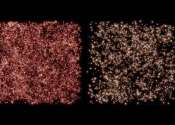Potential first traces of the universe's earliest stars
The very first stars likely formed when the universe was only 100 million years old, less than one percent its current age. These first stars—known as Population III—were so titanically massive that when they ended their ...









